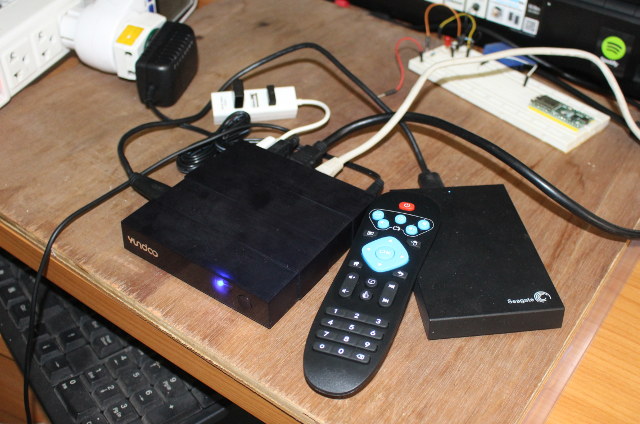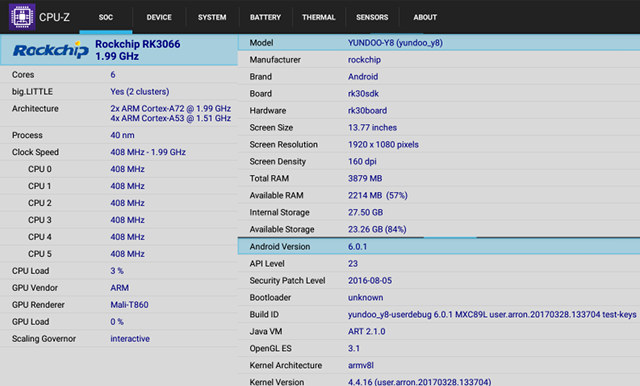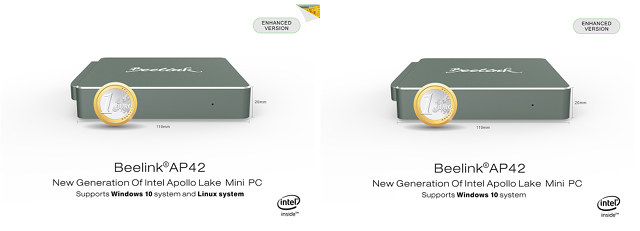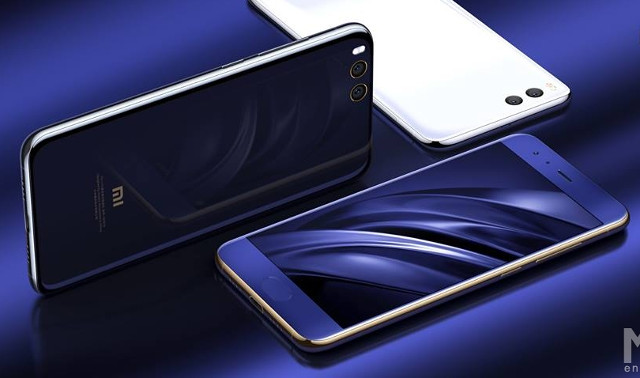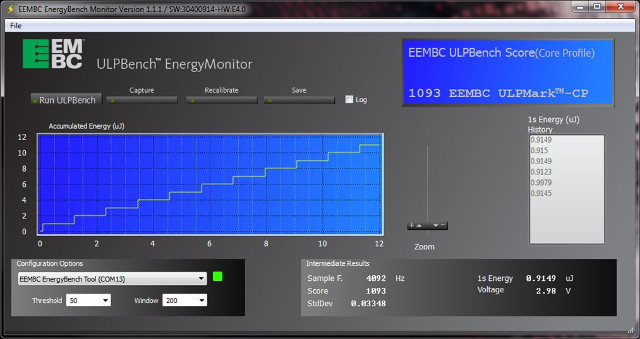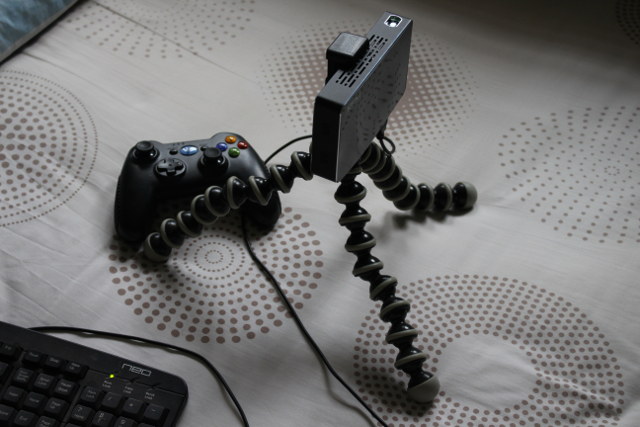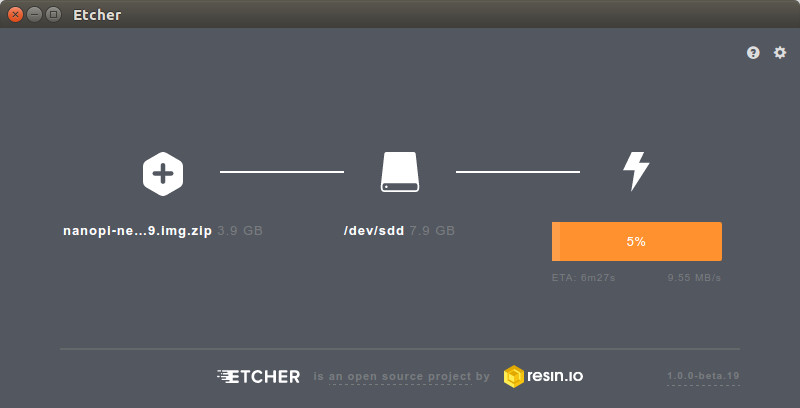Yundoo Y8 is one of the first Android TV boxes / mini PCs powered by Rockchip RK3399 hexa-core processor to be launched. GearBest sent me a review sample, and since I’ve already taken it apart in the first part of the review, I’ll report my experience with the firmware in terms of stability and performance, as well as audio & video capabilities with TVMC (Kodi fork), and more. First Boot, Setup, and First Impressions I’ve first connected a few peripherals Seagate USB 3.0 drive to the USB port, a USB keyboard to one of the USB 2.0 port, and a USB hub to the other one with two USB RF dongles for MINIX NEO A2 Lite air mouse, and Tronsmart Mars G01 gamepad. After adding Ethernet and HDMI cable, I pressed the power button on the unit to start it up. Please note that the remote control cannot turn on […]
Yundoo Y8 Rockchip RK3399 TV Box System Info and Benchmarks
Most 64-bit ARM processors found in TV boxes and mini PC features ARM Cortex A53 cores which are good enough to watch most videos, since video decoding is usually handled by the video processing unit. But if you want some more performance for games and web browsing, SoCs based on Cortex A72 or similar high performance ARMv8 cores would deliver much a much better experience in Android. The problem is that there aren’t many options with products such as NVIDIA Shield Android TV, and Xiaomi Mi Box 3 Enhanced. The former is potentially expensive depending where you live, and the later is targeted at the Chinese market and lacks an Ethernet port. Rockchip RK3399 SoC should fill the market void for people wanting to do more than just watching videos on their TV box, and since I’ve just received Yundoo Y8 TV box based on the processor, I’ve run some […]
Beelink AP42 Apollo Lake mini PC Linux Review with Ubuntu, KDE Neon, Elementary OS….
Beelink’s latest Intel mini PC offerings includes the AP34 and AP42 which are their first models using Intel Apollo Lake processors. The former uses an Intel Apollo Lake Celeron N3450 processor (burst frequency 2.2GHz, Intel HD Graphics 500 with Graphics Burst Frequency 700MHz and 12 Execution Units) while the latter uses the slightly more powerful Pentium N4200 (burst frequency 2.5GHz, Intel HD Graphics 505 with Graphics Burst Frequency 750MHz and 18 Execution Units). Both support Windows 10 (Home) and Beelink’s marketing claim they “support Linux system”. GearBest has given me the chance to review running Linux on the AP42 model so here are my findings. Normally I first make a disk image before booting Windows or installing Linux. However initial attempts at booting a Live USB with a variety of Linux systems failed so both the reseller and manufacturer were contacted for comment. Interestingly there was no immediate reply but early […]
Xiaomi Mi 6 Smartphone is Powered by Snapdragon 835 Processor, Comes with 6GB RAM, Up to 128GB Storage
Xiaomi has unveiled its latest phone with Mi 6 smartphone equipped with a 5.15″ display, Qualcomm Snapdragon 835 octa-core processor, 6GB RAM, 64 or 128GB storage, and more. Xiaomi Mi 6 specifications: SoC – Qualcomm Snpadragon 835 octa-core Kryo 280 processor with 4x cores @ 2.45 GHz, 4x cores @ 1.9 GHz, Adreno 540 GPU with support for OpenGL ES 3.2, OpenCL 2.0 full, Vulkan, DX12, Hexagon 682 DSP System Memory – 6GB LPDDR4X dual channel memory Storage – 64 or 128 GB UFS 2.0 flash; NO micro SD card Display – 5.15″ capacitive touch display with 1920×1080 resolution, 428ppi Audio – Speakers; microphone; NO 3.5mm audio jack Cellular Connectivity 2G: GSM 2/3/5/8; CDMA: BC0 3G: WCDMA B1/2/5/8; TD-SCDMA: B34/39 4G: FDD-LTE: B1/3/5/7/8, TDD-LTE:38/39/40/41 Dual Nano SIM card dual standby Other Wireless Connectivity – Dual band 802.11 b/g/n/ac WiFi, Bluetooth 5.0, GPS with A-GPS, GLONASS, BEIDOU Camera – 12.0MP+12.0MP dual […]
EEMBC IoT-Connect is a Family of Benchmarks Designed To Test the Power Efficiency of IoT Devices
EEMBC, the Embedded Microprocessor Benchmark Consortium, has been providing benchmarks for embedded systems since 1996, including ULPBench helping to rank micro-controllers by their power efficiency. But with the Internet of Things gaining traction, it’s important to test more than just the MCU core’s power efficiency, and having a benchmark taking sensors and connectivity into account would be useful. That’s exactly what EEMC IoT-Connect benchmark family aims for with the three main characteristics: Provides flexibility to accommodate various communication protocols (e.g. Bluetooth, Thread, LoRa, WiFi) Portable to work with any vendor’s microcontroller and radio-module products Compatible with EEMBC ULPBench and EEMBC IoT-Secure benchmarks The first benchmark of the family is IoTMark-BLE connectivity profile that supports Bluetooth (LE) MCUs. The benchmark requires fixed payload size, frequency of transmission, and transmit power, and performs a complete sequence of event ranging from sensor reading, to BLE notifications, and command write and CRC. The IoT-Connect […]
Rikomagic RKM R1 Mini Projector Review – Part 2: Android Firmware, Kodi, Touchpad, and HDMI Input
Rikomagic RKM R1 is a projector running Android 4.4.4, and powered by Rockchip RK3128 quad core Cortex A7 processor with 1GB RAM, and 32GB storage. It has a particular feature as it comes with a touchpad on the top of the case as we’ve seen in the unboxing and teardown part of the Rikomagic R1 review. Today, I’ll report my experience with the projector playing games in Android, 1080p videos with Kodi 14.2, using the touchpad, and connecting a laptop through the HDMI input port. I’ll also run some benchmarks as usual. RKM R1 Android User Experience and HDMI Input I wanted to relax and use the projector on the bed pointing to the ceiling. RKM R1 comes with a tripod, but it’s quite small, not the projector would fall off, so I used my own tripod, connected a USB keyboard, and the USB RF dongle for Tronsmart Mars G01 […]
NanoPi NEO2 Board Benchmarks with Ubuntu 16.04.2 using Linux 3.10 and Linux 4.10
I’ve received NanoPi NEO 2 boards, add-boards and sensor modules last week, where we could see how small the boards were, and how it could be suitable for IoT projects or “hardware hacking” education. Before testing the board with the add-ons, I have to select the image to run on the board, and currently we have two choices: Ubuntu 16.04.2 FriendlyELEC image with Linux 3.10 “legacy” kernel, or Armbian Ubuntu 16.04.2 Xenial nightly build with Linux 4.10 “mainline” kernel. So I decided to try both: dfssf nanopi-neo2-ubuntu-core-qte-sd4g-20170329.img.zip (296 MB) is the image from FriendlyELEC (previously FriendlyARM) Armbian_5.27.170401_Nanopineo2_Ubuntu_xenial_dev_4.10.0.7z (222 Mb) is the image from Armbian, which I downloaded on March 31st despite the filename including “170401” string You can flash the image with Win32DiskImager (Windows) or dd (linux) to a micro SD card the usual way, and while I’ve never personally had troubles with dd, I’ve been told Etcher was better, […]
Mecool KIII Pro Hybrid STB Review – Part 2: Android Firmware, TV Center, and DVB-T2 & DVB-S2 App
Last year I reviewed K1 Plus T2 S2, an Android TV box powered by Amlogic S905 quad core processor with DVB-T2 and DVB-S2 tuner support, which worked with some caveats. VideoStrong has now send me an updated model with Amlogic S912 octa-core processor, which I presented in the post entitled Mecool KIII Pro Hybrid Android STB Review – Part 1: Specs, Unboxing and Teardown, where I listed the specifications, and showed photos of the device and the boards (main board + tuner board). I’ve now had time to play with the device, and in many respects the user experience is very similar to the one I got with KI Plus T2 S2 models, but there are also some tweaks, and a few bugs which I’ll report in the second part of the review below. KIII Pro Hybrid TV Box Setup, Settings, & Power Consumption The four USB ports are really […]


